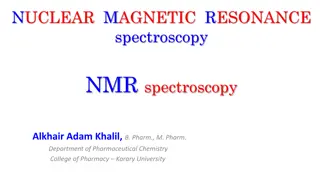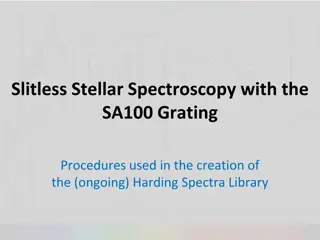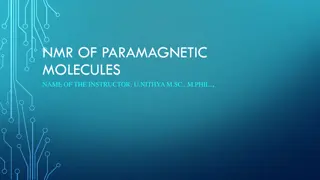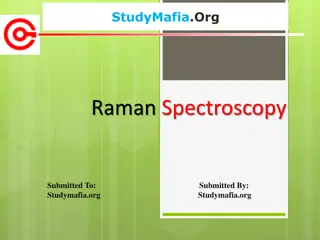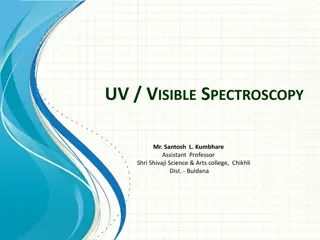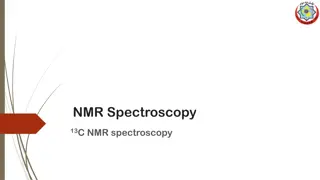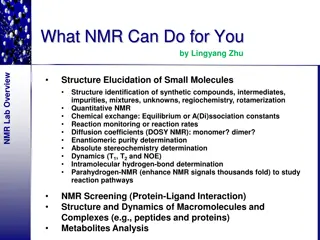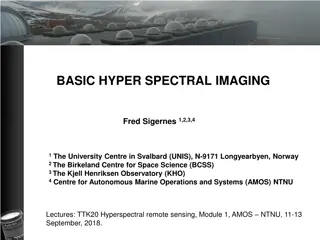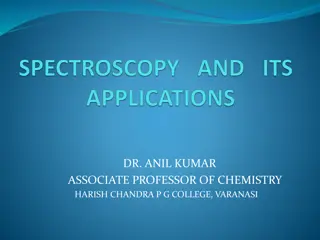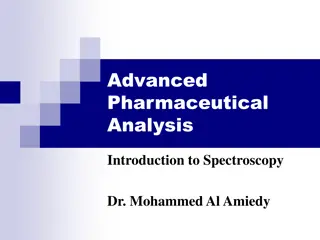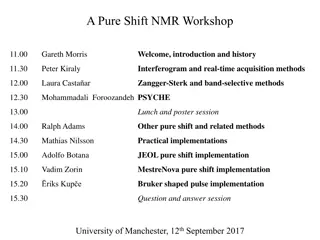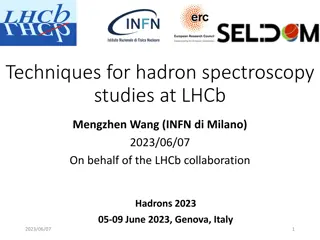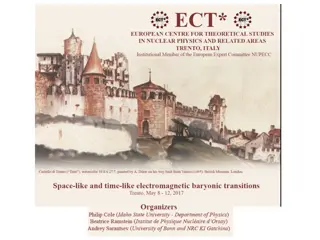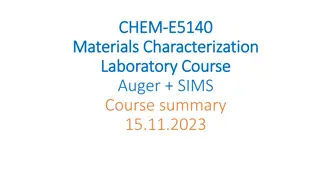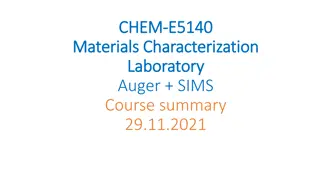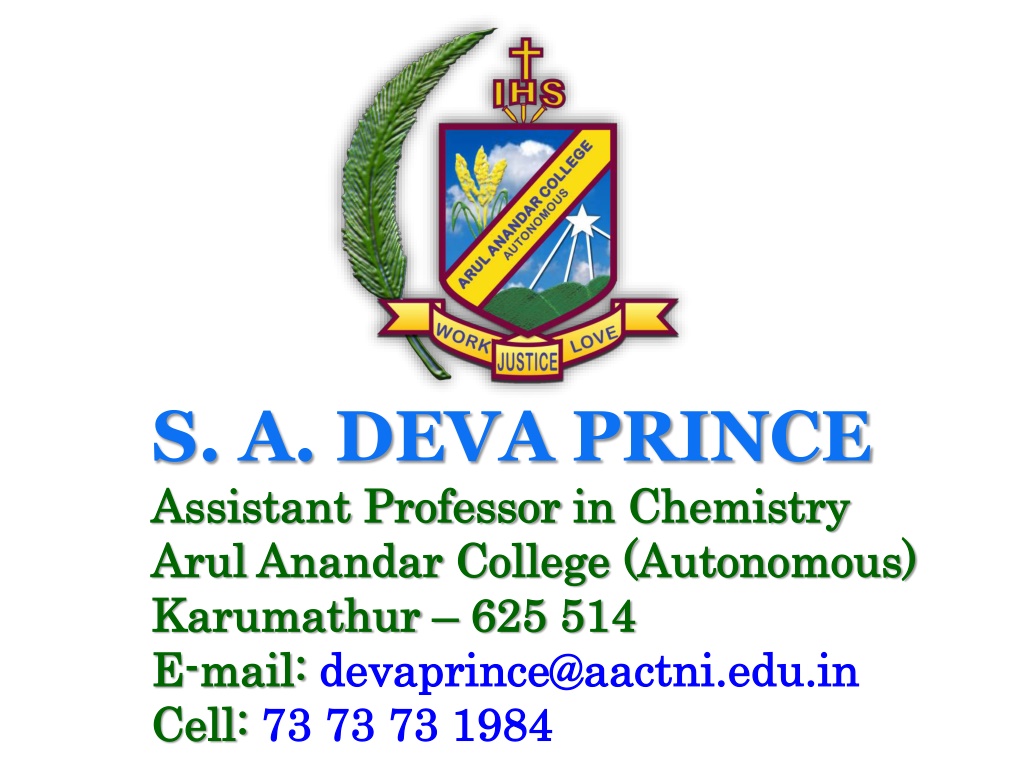
NMR Spectroscopy Applications and CSIR NET Questions
Explore applications of NMR spectroscopy in inorganic compounds and test your knowledge with CSIR NET questions from December 2011 to June 2014. Topics include the number of signals, multiplicities, chemical shifts, and spectral interpretations in NMR. Enhance your understanding of nuclear magnetic resonance with these insightful resources.
Download Presentation

Please find below an Image/Link to download the presentation.
The content on the website is provided AS IS for your information and personal use only. It may not be sold, licensed, or shared on other websites without obtaining consent from the author. If you encounter any issues during the download, it is possible that the publisher has removed the file from their server.
You are allowed to download the files provided on this website for personal or commercial use, subject to the condition that they are used lawfully. All files are the property of their respective owners.
The content on the website is provided AS IS for your information and personal use only. It may not be sold, licensed, or shared on other websites without obtaining consent from the author.
E N D
Presentation Transcript
S. A. DEVA PRINCE Assistant Assistant Professor Professor in Arul Arul Anandar Anandar College College (Autonomous) Karumathur Karumathur 625 625 514 E E- -mail mail: : devaprince@aactni devaprince@aactni. .edu Cell Cell: : 73 73 73 73 73 73 1984 1984 in Chemistry Chemistry (Autonomous) 514 edu. .in in
Applications of Applications of NMR Spectroscopy NMR Spectroscopy in Inorganic Compounds in Inorganic Compounds
CSIR CSIR NET Questions NET Questions (December, 2011 December, 2017)
December, 2011 (two marks) 1. In PF5, the number of signals and multiplicity at room temperature are, (1)one, singlet (2)one, doublet (3)two, doublet (4)two, singlet
December, 2012 (two marks) 2. 1H NMR spectrum of HD would show (1)a singlet (2)a doublet (3)a triplet with intensity ratio 1:2:1 (4)a triplet with intensity ratio 1:1:1
December, 2012 (four marks) 3. Find out the number of lines in the 31P NMR signal for (1)3 (2)6 (3)18 (4)90
June, 2013 (two marks) 4. In NMR spectroscopy, the product of the nuclear g factor (gN), the nuclear magneton ( N) and the magnetic field strength (B0) gives the (1)energy of transition from to state (2)chemical shift (3)spin-spin coupling constant (4)magnetogyric ratio
June, 2014 (four marks) 5. The 19F NMR spectrum of ClF3 shows (1)doublet and triplet for a T-shaped structure (2)singlet for a trigonal planar structure (3)singlet for a trigonal pyramidal structure (4)doublet and singlet for a T-shaped structure
June, 2014 (four marks) 6. The low temperature (-98 C) 19F NMR spectrum of SF4 shows doublet of triplets. It is consistent with the point group symmetry (1)C3v (2)C4v (3)Td (4)C2v
June, 2014 (four marks) 1H NMR spectrum of [( 5-C5H5)Rh(C2H4)2] at -20 C shows a typical AA XX pattern in the 7. olefinic region. On increasing the temperature to 70 C, the separate lines collapse into a single line which is due to
(1)free rotation of the ethylene ligand about the metal-olefin bond (2)intra-molecular exchange between the ethylene ligands (3)inter-molecular exchange between the ethylene ligands (4)change in hapticity of the cyclopentadienyl ligand
December, 2014 (two marks) 8. The ratio of the relative intensities of the carbon signals in the first order 13C NMR spectrum of CD3Cl is (1)1:4:6:4:1 (2)1:3:3:1 (3)1:6:15:20:15:6:1 (4)1:3:6:7:6:3:1
December, 2014 (four marks) 9. 1H NMR spectrum of free benzene shows a peak at 7.2 ppm. The expected chemical shift (in ppm) of C6H6 ligand in 1H NMR spectrum of [( 6-C6H6)Cr(CO)3] and the reason for it, if an, is/ are
(1)4.5; disruption of ring current (2)9.0; inductive effect (3)7.2 (4)2.5; combination of inductive effect and disruption of ring current
December, 2015 (two marks) 10.The 1H NMR spectrum of a dilute solution of a mixture of acetone and dichloromethane in CDCl3 exhibits two singlets of 1:1 intensity. Molar ratio of acetone to dichloromethane in the solution is
(1)3:1 (2)1:3 (3)1:1 (4)1:2
December, 2015 (four marks) 11.[( 3-C3H5)Mn(CO)4] shows fluxional behaviour. The 1H NMR spectrum of this compound when it is in the non-fluxional state shows (1)one signal (2)two signals in the intensity ratio 4:1 (3)three signals in the intensity ratio 2:2:1 (4)five signals of equal intensity
June, 2016 (four marks) 12.The 1H NMR spectrum of [( 4-C8H8)Ru(CO)3] at 23 C consists of a sharp single line. The number of signals observed at low temperature (-140 C) in its spectrum is (1)8 (2)6 (3)4 (4)2
June, 2016 (four marks) 13.The number of lines shown by the part of the molecule Ph3P.11BH3 in the 1H NMR and 11B NMR spectra are, respectively [I(11B)=3/2; I(31P)=1/2] (1)8 and 8 (2)4 and 8 (3)3 and 6 (4)6 and 3
December, 2016 (two marks) 14.The expected number of 19F NMR spectral lines, including satellites, for [XeF5]- is [Abundance of 129Xe (I=1/2) = 26%] (1)two (2)twenty one (3)three (4)one
December, 2016 (two marks) 15.1H NMR spectrum of a mixture of benzene and acetonitrile shows two singlets of equal integration. The molar ratio of benzene : acetonitrile is (1)1:1 (2)2:1 (3)1:2 (4)6:1
December, 2016 (four marks) 16.The reaction between PI3, PSCl3 and zinc powder gives P3I5 as one of the products. The solution state 31P NMR spectrum of P3I5 shows a doublet ( 98) and a triplet ( 102). The correct structure of P3I5 is
December, 2017 (four marks) 17.Assuming 1JPH > 1JPB, the expected 31P NMR spectrum of H3P:11BCl3 [for 11B, I =3/2] is

